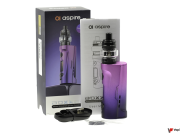Nearly 14 million U.S. adults vaped in 2018, up from over 11 million adults in 2016. The researchers reported that the increase was seen in all socioeconomic groups, and age groups. However the increase was sharper in the 18 to 24 age group, where it increased from 9% in 2016, to 15% in 2018. Data was collected on more than one million Americans who took part in the Behavioral Risk Factor Surveillance System for 2016 to 2018.
“The increase in e-cigarette use among individuals with other health-risk behaviors is also concerning, particularly in light of the outbreak of e-cigarette or vaping use-associated lung injuries that has been linked to the vaping of tetrahydrocannabinoids [THC],” she added.
Obisesan said that the addictive nature of e-cigarettes is troubling. “Increase in e-cigarette use among adults in the U.S., particularly daily use, is reflective of the addictive potential of e-cigarettes,” Obisesan said. “This is very important to note, particularly for the youth and for individuals who currently use or are considering using them as a means of experimentation.”
Vaping amongst non-smokers increased from 1.4% to 2.3% in 2 years
The study indicated that vaping rates even increased amongst never smokers from over 1.4% in 2016 to 2.3% in 2018, with people who are into other risky behaviors—such as drinking alcohol and smoking marijuana, being more likely to use e-cigarettes.
In line with this, studies have indicated that individuals who have the personality type inclined to experiment, are very likely to try a number of substances, illicit or not. This means that teens who take up vaping, would most likely be smoking if e-cigarettes did not exist, and given the relative safety of the former, choosing vaping between the two is a mini victory for public health.
Teens craving excitment are more likely to experiment with different substances
In fact a new study of high school seniors in the U.S., found that those teens who are less satisfied with their lives and seek out risky and exciting experiences are the ones more likely to use multiple illicit substances regularly, including e-cigarettes. Additionally, found the study, the participants’ attitude towards vaping also reflected how they viewed other substances.
“Students who scored the highest on sensation-seeking viewed substance use as less harmful than did peers who were low-level users that mostly abstained from drinking, smoking and using drugs,” said lead study author Kevin Tan.
“While the high school years are typically a time during which risk-taking and sensation-seeking peak, our results indicate that there are marked differences in sensation-seeking among students who regularly use substances compared with those who don’t.”













